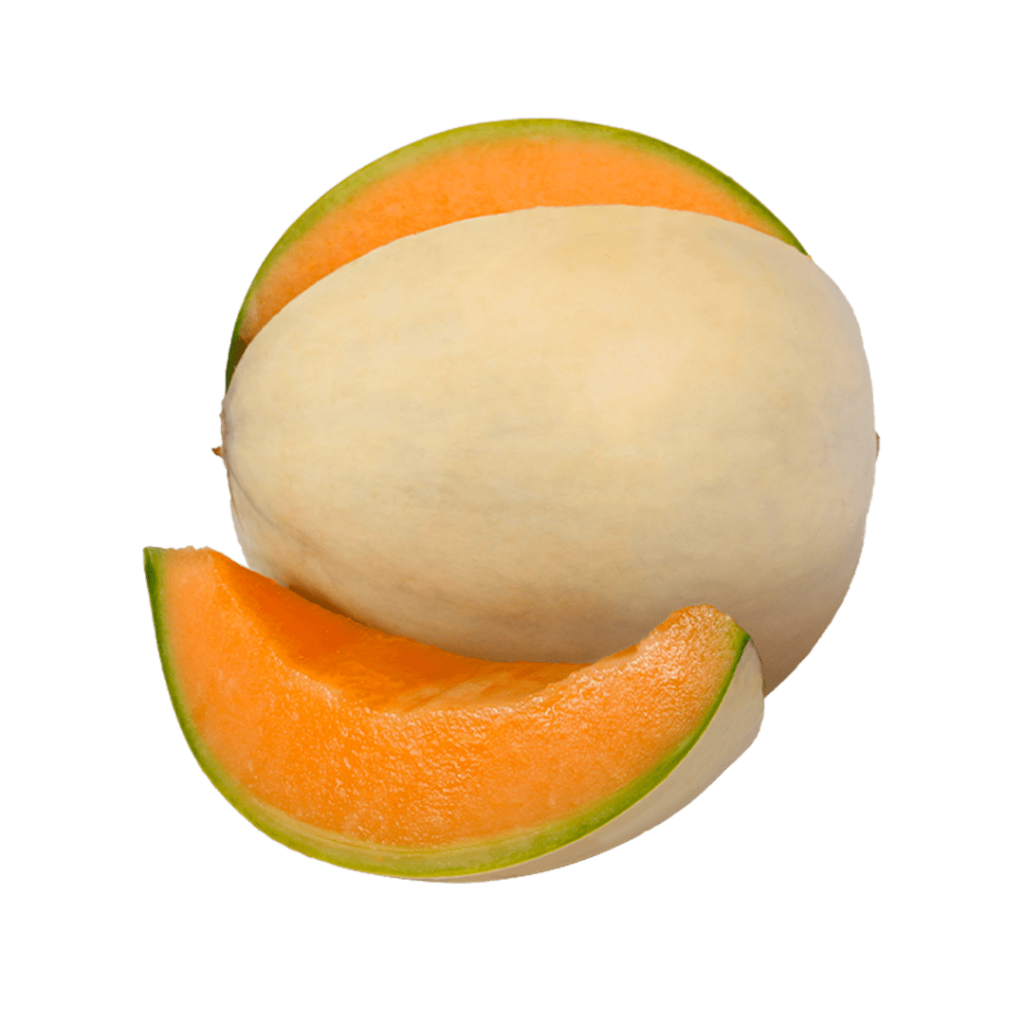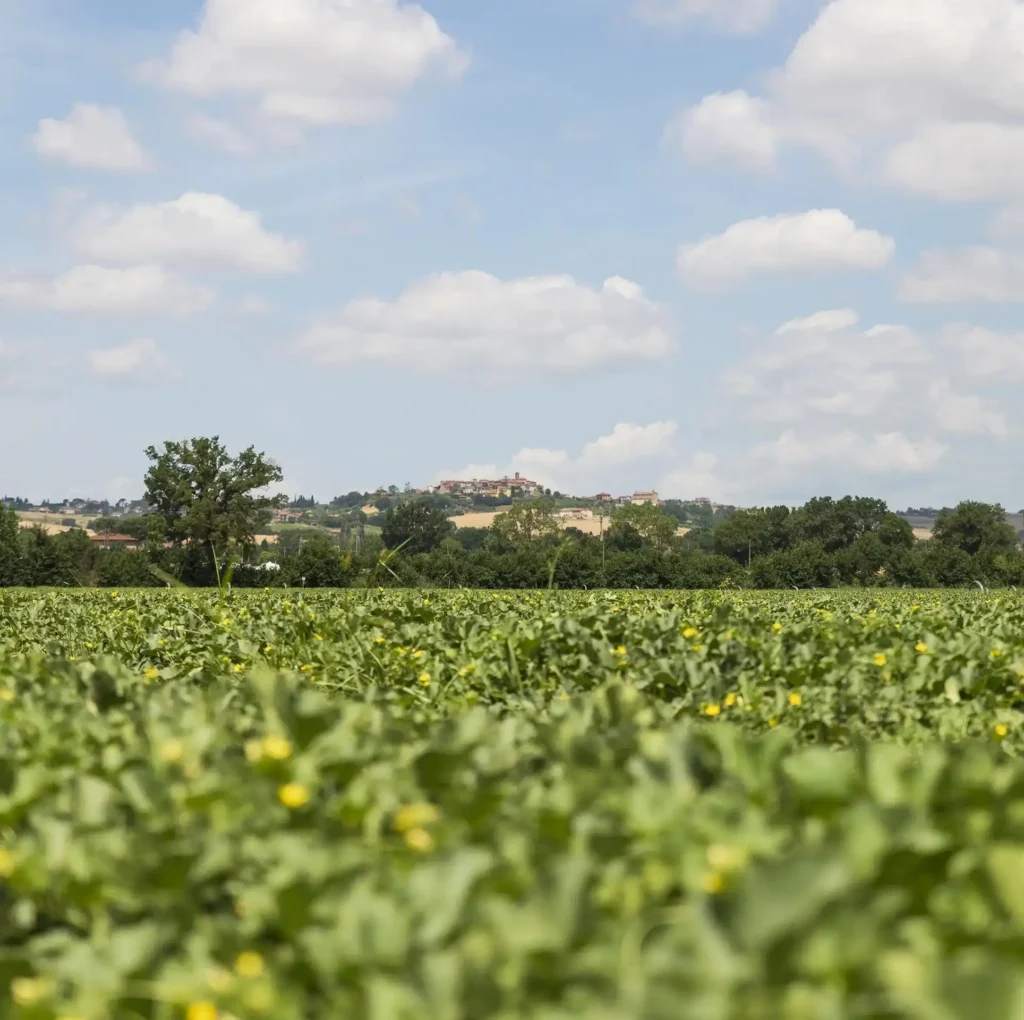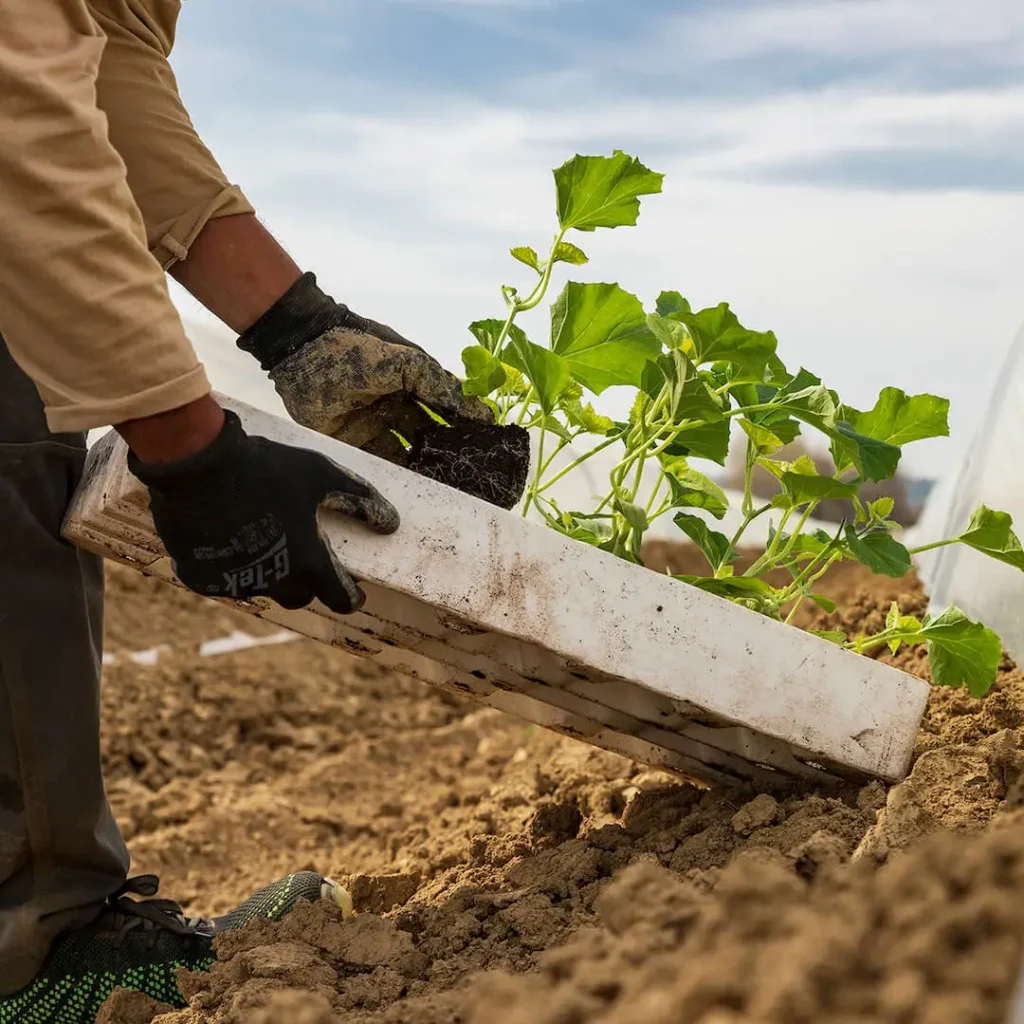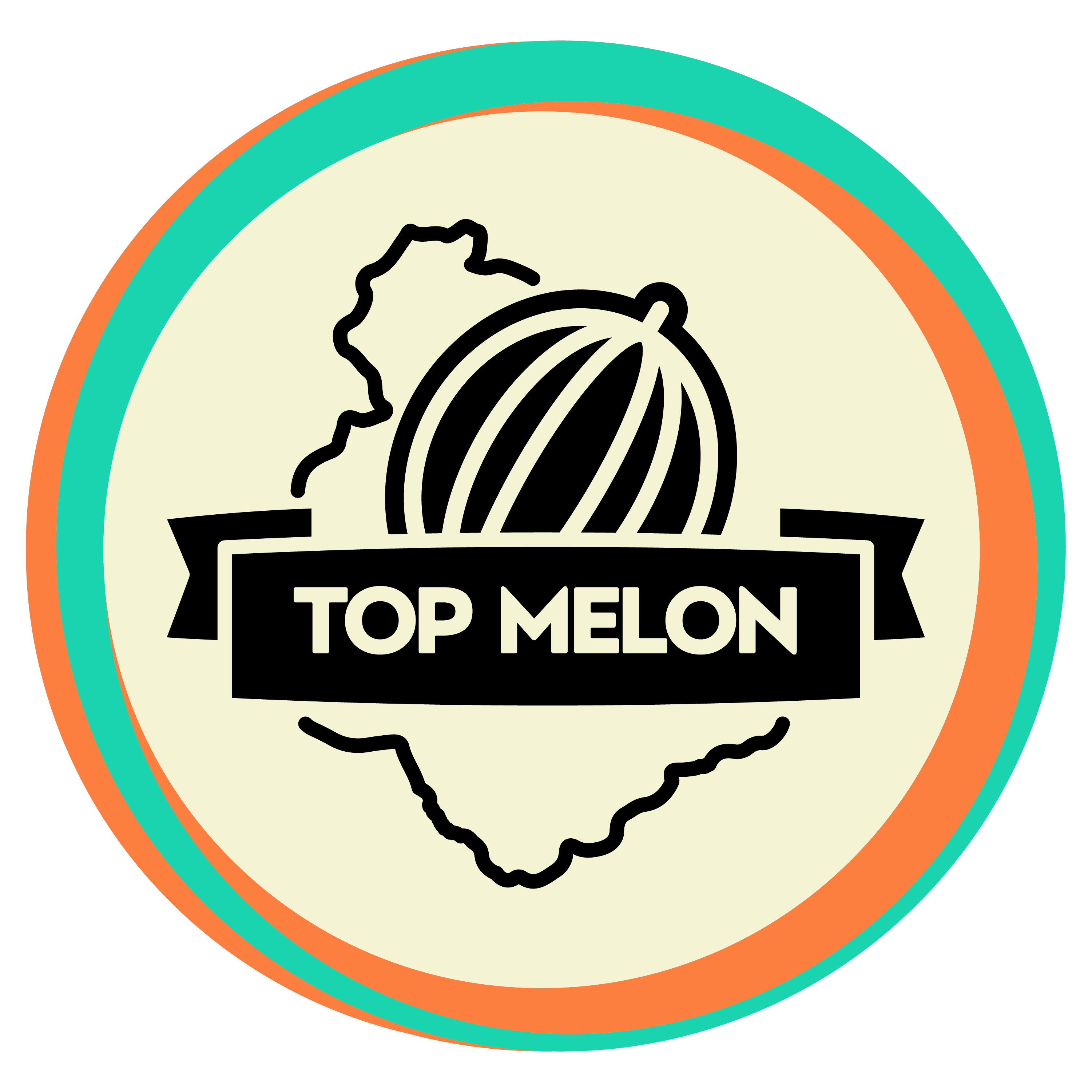melons
netted, smooth & canary
we put love & passion
Melon has always been one of the most loved fruits by Italian families.
Natural source of energy thanks to its content of natural sugars and its supply of vitamins and minerals, the fruit is recognized as an excellent refreshing, diuretic and great ally against free radicals.
What is the secret element that makes ours a product of international excellence?
Well, love of course.
The Top Melon melon is composed of 90% water (like all the others) and 10% love that for 25 years we have poured with care on every single fruit.
The connection with our Umbrian roots and the fertile soils that characterize the green region of Italy, make each of our products unique in taste, aroma and quality.

netted melon

The netted melon has always been the most known and consumed fruit in Italy.
The scent is overwhelming – an interweaving of strong and decisive notes. The flavor is so sweet to conquer the palates of the whole world.
To consume the product at the maximum moment of ripening, it is essential to know how to translate the messages that the mesh skin transmits – the green tones of the striations indicate the degree of ripening of the fruit.
The pulp is bright orange with a soft and very juicy texture, characteristics that make the melon highly moisturizing.
This type of melon is the most in demand. Top Melon production is up to 120,000 quintals per year, to respond to the high market request, ensuring high quality standards.
The rated melon season runs from April to October, months in which the climate allows it to be harvested.
smooth melon

A member of the same family as the netted melon, the smooth melon is distinguished by its delicate characteristics that give it an unparalleled quality.
Top Melon produces about 5,000 quintals of this delicious fruit every year.
Let’s discover the specific characteristics of this delicious and refined type:
Its exotic aroma and aromatic flavour make the smooth melon an original ingredient and much appreciated in the gourmet cuisine of all times.
The texture is soft and sweet on the palate, each bite ensures an explosive load of natural sugars and vitamin B.
The color of the smooth skin is unmistakable – shades that from white reach yellow tones at the time of harvest.
The smooth melon season runs from June to September.
canary melon

Arrived in Italy from Egypt in the first century AD, the canary melon has become a fruit of excellence present on the tables of many.
The purely ovoid shape and the bright yellow colour of the skin make it easily recognizable to the eye. From the outside, this type of melon does not emit a characteristic aroma but, once cut, the light and juicy pulp releases an unmistakable scent.
The strong scent of white flesh contrasts with the delicate and thirst-quenching taste, a guarantee of its goodness.
The size of the fruit is very variable, it can even weigh up to 3 kg, far exceeding the size of the “classic” melon.
The canary melon season runs from August to October, Top Melon produces an amount of about 3,000 quintals per year.
Trade name: Melon
Botanical variety: Cucumis Melo
Zone of Origin: Italy
Melon (Cucumis Melo), a climber in the pumpkin family (Cucurbitaceae), grown for its edible fruits.
From the botanical point of view, the melon is a herbaceous plant with long stems that are provided with simple crawling or climbing tendrils, depending on the varieties.
Four types of varieties are grown mainly in our country, netted melon, charentais, smooth and yellow. It is one of the largest fruits, weighing between 700 gr to 4 kg. The skin varies in texture and color (green, yellow, orange or even white), as well as the pulp (from yellowish white to orange, passing through green).
Together with watermelon it is one of the most appetizing fruits of summer. The melon actually contains a lot of water, about 95%. 100 g of its pulp provides only about 35 calories and 8 g of carbohydrates.


A melon contains 90% water, 8% carbohydrates, 0.8% protein and 0.2% fat, providing 34 kcal and provitamin A, carotene, beta-carotene per 100 grams. Fresh melon is a rich source (20% or more of the daily value or DV) of vitamin C (44% DV) and vitamin A (21% DV), with other nutrients in smaller amounts.
From the melon, multiple health benefits are obtained, this thanks to the constituents such as:
- Carotenoids, a powerful antioxidant that helps maintain healthy eye function.
- Folate, metabolites derived from the best known folic acid, important for a healthy development of the body’s cells.
- Vitamin C, essential and antioxidant to prevent the risk of tumour lesions and increase the defences of the immune system.
- Vitamin A, important for the health of gums, skin, bones and mucous membranes.
Melon is better digested if you eat it yourself. In any case, it is not advisable to eat it too cold.
Melon seeds are rich in health benefits. They are an excellent source of protein, vitamins (thiamine and niacin, vitamin B6 and pantothenic acid), minerals (magnesium, copper, zinc, iron, potassium, phosphorus and manganese) and fatty acids.
Although the minerals and vitamins in them may seem low, they are still far preferable to other snacks. We can eat the seeds directly together with the fruit or alone, perhaps after drying. However, the lack of appetite leads us to suggest that you dry them in the sun and season the salad, perhaps after salting them to taste.
How to choose the melon
Choosing the right melon is not an easy task. The truth is that each type and each variety have distinctive and specific signs for a correct identification of the state of maturation and therefore of the goodness of the fruit that we will eat.
Observe if along the perimeter of the base of the petiole there are small but perceptible lesions (like little cracks or splits) and that the green color of the skin around the latter is not too intense green. Usually the melon must smell (except for some varieties), but the aromatic picture must be pleasant, soft and continuous. If it is excessive or worse, prone to alcohol, it could mean over-ripening and therefore poor shelf life and altered taste. The pulp must appear compact and of homogeneous colour, with the part of the seeds easily detachable.
How to store the melon
All types of melon can be stored fresh or in the refrigerator but not in contact with the walls in order to avoid excessive cooling on parts of the pulp that could damage it.
How to prepare
Slice the melon in half and collect the seeds with a large spoon. Cut the outer skin as needed. Eat it as it is either in a salad or accompanied with ham. Delightful!











